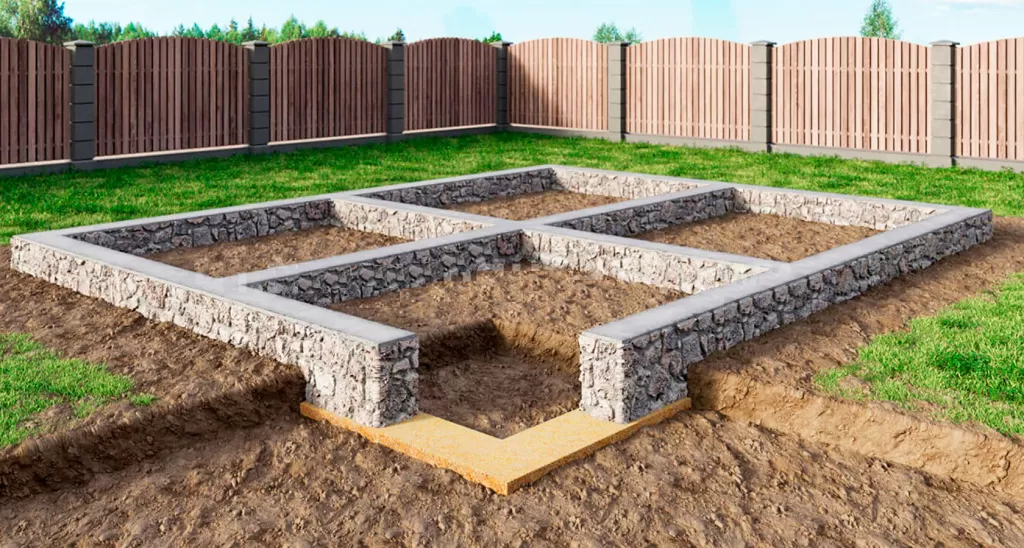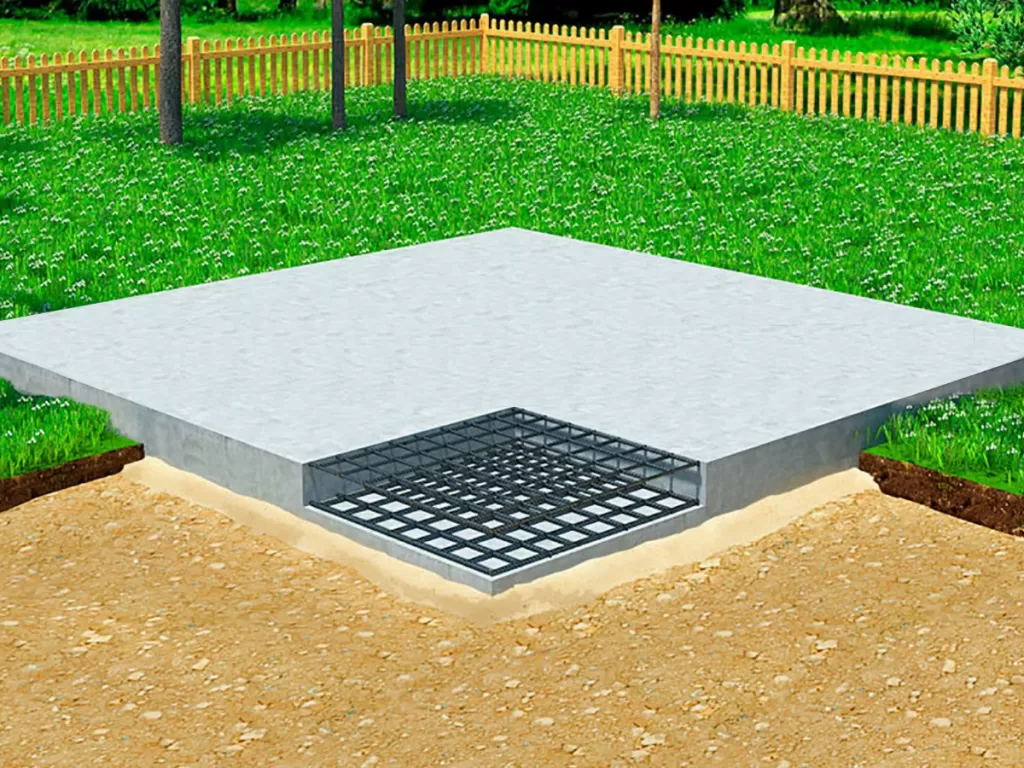The tape and monolithic foundations are constantly competing with each other, because among builders and non-professionals there are supporters of both one and the other type of foundation. Both are certainly good, but which one is better? To answer this question, our analysts looked into the design features of both options.
Features and benefits of a strip foundation

In general, the tape structure itself is simple, but in general this type of foundation is considered more complex than a monolithic slab. Depending on the depth of occurrence, the tape structure is deep, shallow and not buried. The base is divided into 2 types: solid and prefabricated.
You can talk about each variety separately for a very long time, so you should concentrate on the features common to all types of strip foundation:
-
High level of strength;
-
Immunity to heaving (volume change) of the soil;
-
Impressive bearing capacity;
-
The possibility of arranging the basement;
-
Simplified laying of engineering communications;
-
The high rigidity of the structure reduces the requirements for the metal frame. In some cases, tape structures do not need reinforcement at all.
-
Ease of installation — the strip foundation is quite within the power of non-professionals — when installing it, you can do without the involvement of builders.
However, it was not without its weaknesses, as always:
-
High material consumption — in the process of laying the foundation, preliminary installation of the formwork is required — one cannot do without auxiliary materials (such as roofing material and wood, for example). -
High material consumption — the level of material costs in the process of erecting a strip base significantly exceeds the quantitative result. -
The strip foundation cannot be called a ready-made base for the floor.
Features and benefits of a monolithic slab

Such a foundation is laid with the capture of the entire house area, to a small extent even protruding beyond the walls of the building. This type of foundation is a solid concrete block, poured directly into the place of further operation.
Some mistakenly consider the slab not the most reliable option for a house foundation due to its shallow occurrence. Nevertheless, the right thickness of the slab and well-executed reinforcement will create a high-quality, reliable foundation for the house.
Consider the main advantages of monolithic slabs:
-
High bearing capacity — a monolithic slab is able to withstand enormous loads — the best option for heavy houses.
-
Large footprint — suitable for building construction on weakly bearing soils (especially those subject to heaving or displacement).
-
Ease of installation — a monolithic slab itself is a rather primitive design that does not require complex calculations or actions during the construction.
-
Low material consumption during laying — the consumption of materials (both basic and auxiliary) is small. In most cases, formwork is not needed at all, and, if necessary, the number of boards will be minimal.
-
Simple preparatory work — the most difficult stage can only be called leveling the site for a monolithic slab (if it is required at all).
Despite the simplicity of working with material and construction, a monolithic slab as a type of foundation has a number of disadvantages:
-
With a significant bending load, powerful reinforcement is required;
-
Material costs when laying a monolithic slab grow in proportion to the increase in the area of the building;
-
The monolithic design excludes the possibility of laying utilities under the house (theoretically, this is possible, but they will last until the first breakdown — it will be physically impossible to repair them);
-
A shallow foundation also excludes the arrangement of the basement. If you deepen the structure, the costs increase significantly.
Subtleties of choice
Answering the question, what is better — a strip foundation or a monolithic one, it is impossible to choose the only correct solution. When choosing a suitable option, it is necessary to take into account, first of all, the features of a particular project:
-
Drawing of the building — the first thing drawn attention to the instructions in the drawing. If the project is drawn up on its own, you need to proceed from the characteristics of the soil.
-
The need for a basement floor — if it is planned to equip a basement or underground communication wiring, the best option is a strip foundation.
-
The severity of the house being built — for powerful buildings, it is necessary to choose the type of foundation that will be able to withstand the load — tape.
-
Type of building — if the building is temporary, it is better to give preference to a monolithic slab — if necessary, it can be dismantled and reused.
-
Soil type — if it is weak, then it will not be able to carry a significant load. In this case, a large supporting area is suitable — it will prevent the subsidence of the building and evenly distribute the load.

Добавить комментарий
Для отправки комментария вам необходимо авторизоваться.